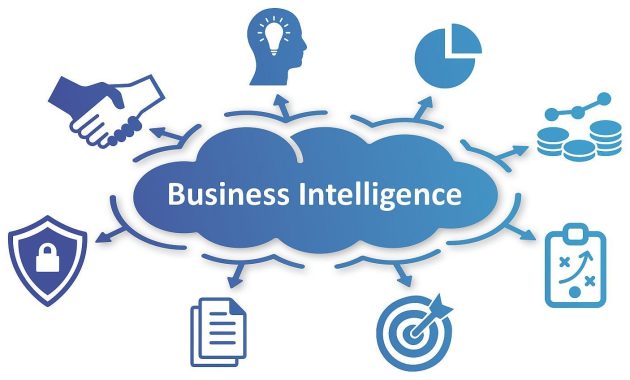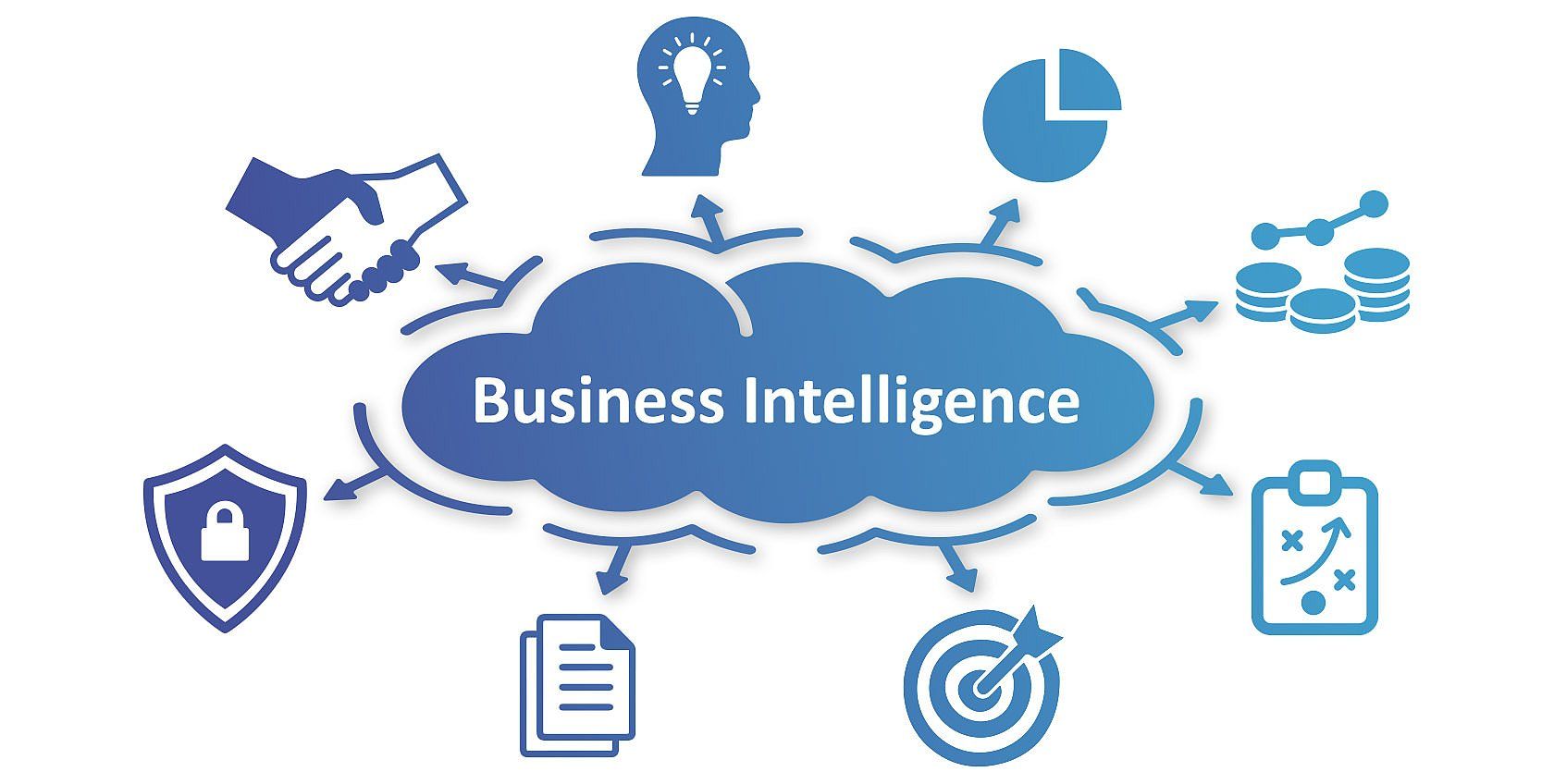
How to Use Business Intelligence Software for Marketing Wins: A Data-Driven Guide
In today’s hyper-competitive marketing landscape, gut feelings and intuition are no longer enough. Success hinges on data. Marketing teams need to understand customer behavior, campaign performance, and market trends. This is where **Business Intelligence (BI) software** steps in. This guide explores **how to use Business Intelligence software for marketing wins**, providing a comprehensive overview of its benefits, implementation strategies, and real-world applications.
The shift toward data-driven decision-making is undeniable. Companies that leverage BI are better equipped to understand their customers. They can also optimize their marketing efforts and achieve higher ROI. This article will dissect the core components of BI for marketing. It provides actionable insights on how to transform raw data into strategic advantages. The focus is on practical application, not just theoretical concepts. We will explore the tools, techniques, and best practices that can help marketers unlock the full potential of their data. The aim is to empower marketing professionals to make informed decisions. It’s about driving measurable results.
Understanding the Power of Business Intelligence in Marketing
At its core, **Business Intelligence software** transforms raw data into actionable insights. It does this through a variety of tools and techniques. These include data aggregation, analysis, and visualization. For marketers, this translates to a deeper understanding of customer behavior. It also means better campaign performance and improved resource allocation. BI allows marketers to move beyond guesswork. They can use data to inform every aspect of their strategy.
The benefits of using **Business Intelligence software** in marketing are numerous. Key advantages include:
- Improved Customer Understanding: BI provides a 360-degree view of the customer. It combines data from various sources. This allows marketers to understand their customers’ preferences and behaviors.
- Enhanced Campaign Performance: Data-driven insights enable marketers to optimize their campaigns. They can identify what’s working and what’s not. This leads to improved ROI.
- Optimized Resource Allocation: BI helps marketers allocate resources effectively. They can focus on the most impactful activities. This minimizes wasted spending.
- Increased Revenue: By understanding customers and optimizing campaigns, BI directly contributes to revenue growth.
- Better Decision-Making: BI provides a solid foundation for making informed decisions. It replaces assumptions with data-backed evidence.
Key Features of Business Intelligence Software for Marketing
Several features define effective **Business Intelligence software** for marketing. These tools help marketers extract value from their data.
- Data Integration: The ability to connect to and integrate data from various sources. These include CRM systems, social media platforms, and web analytics tools.
- Data Visualization: Interactive dashboards and reports that present data in an easy-to-understand format.
- Data Analysis: Tools for performing advanced analysis. This includes segmentation, trend analysis, and predictive modeling.
- Reporting and Dashboards: Customizable reports and dashboards that track key performance indicators (KPIs).
- Data Mining: Techniques for uncovering hidden patterns and insights within large datasets.
Implementing Business Intelligence Software in Your Marketing Strategy
Implementing **Business Intelligence software** requires a strategic approach. Careful planning and execution are crucial for success. The following steps outline a practical implementation plan:
- Define Your Goals: Identify your specific marketing objectives. Determine what you want to achieve with BI.
- Choose the Right Software: Research and select the BI software that best fits your needs. Consider factors such as features, scalability, and cost.
- Integrate Your Data Sources: Connect your BI software to all relevant data sources. This includes CRM, marketing automation, and social media platforms.
- Create Key Performance Indicators (KPIs): Identify the key metrics that will measure your success. Set up dashboards to track these KPIs.
- Train Your Team: Provide training to your marketing team on how to use the BI software. Ensure they understand how to interpret the data.
- Analyze and Iterate: Regularly analyze the data and make adjustments to your marketing strategy. Continuously refine your approach for optimal results.
Real-World Examples of Marketing Wins with Business Intelligence
Many companies have achieved significant marketing wins by leveraging **Business Intelligence software**. Here are a few examples:
- Personalized Email Campaigns: By analyzing customer data, marketers can create personalized email campaigns. These campaigns are tailored to individual preferences and behaviors. This increases engagement and conversion rates.
- Improved Customer Segmentation: BI helps marketers segment their customer base. They can identify distinct groups with similar characteristics. This allows for more targeted marketing efforts.
- Optimized Content Strategy: By analyzing content performance data, marketers can identify the most effective content types. They can also tailor their content strategy to resonate with their target audience.
- Predictive Analytics for Lead Scoring: BI can be used to predict which leads are most likely to convert. This allows sales teams to focus on the most promising prospects.
- Campaign ROI Measurement: BI provides accurate measurement of campaign ROI. This allows marketers to optimize their campaigns for maximum profitability.
Choosing the Right Business Intelligence Software
Selecting the right **Business Intelligence software** is crucial for success. The market offers numerous options, each with its own strengths and weaknesses. Consider the following factors when making your decision:
- Ease of Use: Choose software that is user-friendly and easy to navigate. This will ensure that your team can quickly adopt and utilize the tool.
- Integration Capabilities: Ensure that the software can integrate with your existing data sources. This includes CRM, marketing automation, and social media platforms.
- Reporting and Visualization Features: Look for software that offers robust reporting and visualization capabilities. This will allow you to easily interpret your data.
- Scalability: Choose software that can scale with your business needs. As your data grows, the software should be able to handle it.
- Cost: Consider the cost of the software and whether it fits within your budget. Compare pricing models and features to find the best value.
- Support and Training: Ensure that the software vendor offers adequate support and training. This will help your team get up to speed quickly.
Best Practices for Using Business Intelligence in Marketing
To maximize the benefits of **Business Intelligence software**, follow these best practices:
- Start Small: Begin with a specific project or goal. This allows you to test the software and learn its capabilities.
- Focus on Key Metrics: Prioritize the metrics that are most important to your marketing objectives. Avoid getting bogged down in unnecessary data.
- Automate Reporting: Automate your reporting processes to save time and effort.
- Regularly Review and Refine: Continuously analyze your data and make adjustments to your strategy. The marketing landscape is constantly evolving.
- Foster a Data-Driven Culture: Encourage a culture of data-driven decision-making throughout your marketing team.
- Ensure Data Accuracy: Data quality is paramount. Implement processes to ensure the accuracy and reliability of your data.
- Protect Data Privacy: Always comply with data privacy regulations. Protect sensitive customer information.
The Future of Business Intelligence in Marketing
The future of **Business Intelligence software** in marketing is bright. As data volumes continue to grow, BI tools will become even more essential. Advancements in artificial intelligence (AI) and machine learning (ML) will further enhance their capabilities. Marketers can expect to see:
- More Predictive Analytics: AI and ML will enable more sophisticated predictive analytics. This will allow marketers to anticipate future trends and customer behavior.
- Increased Automation: BI tools will automate more marketing tasks. This will free up marketers to focus on strategic initiatives.
- Improved Personalization: BI will drive even greater personalization across all marketing channels.
- Real-Time Insights: BI will provide real-time insights. This will allow marketers to respond to changes in the market quickly.
The integration of AI and ML will lead to more accurate predictions. It will also provide more personalized customer experiences. Marketing will become more efficient and effective. The role of BI in marketing will only continue to grow.
Conclusion: Embracing Data for Marketing Success
Mastering **how to use Business Intelligence software for marketing wins** is no longer optional. It is a strategic imperative. By embracing data-driven decision-making, marketers can gain a competitive edge. They can also achieve significant improvements in their campaign performance and ROI. This guide has provided a comprehensive overview of BI for marketing. It includes key features, implementation strategies, and real-world examples. By following the best practices outlined in this article, marketers can unlock the full potential of their data. They can transform their marketing efforts and drive sustainable growth. The journey toward data-driven marketing requires commitment and ongoing learning. The rewards are well worth the effort. By using BI effectively, marketing teams can achieve remarkable results.
[See also: Related Article Titles]

